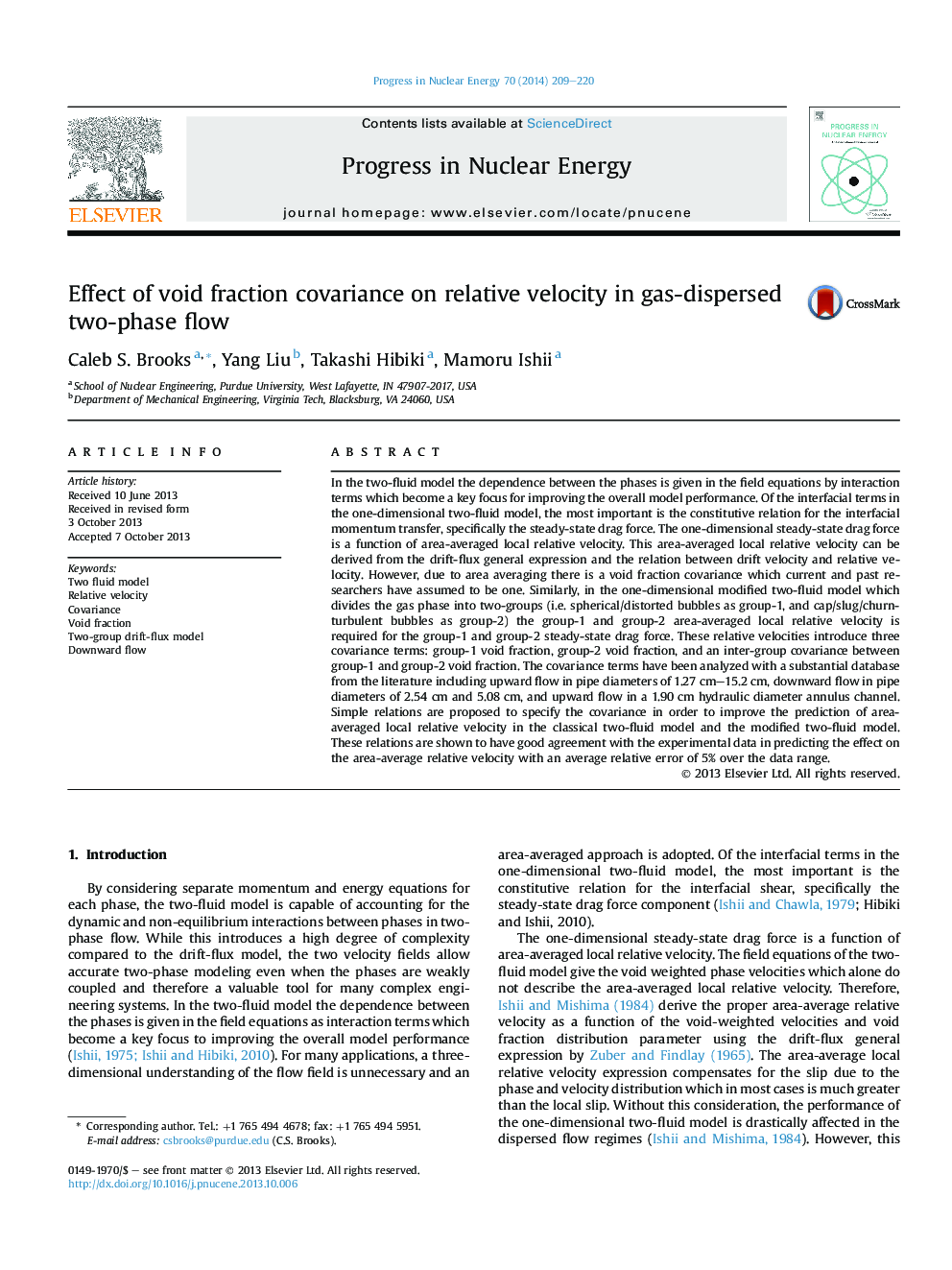| Article ID | Journal | Published Year | Pages | File Type |
|---|---|---|---|---|
| 1740776 | Progress in Nuclear Energy | 2014 | 12 Pages |
•Improvement of the area-averaged local relative velocity in gas-dispersed flow.•Covariance effect in area-averaging total, group-1, and group-2 void fraction.•Void fraction covariance studied with database of upward, downward adiabatic flows.•Easily implemented correlations proposed for important void fraction covariances.
In the two-fluid model the dependence between the phases is given in the field equations by interaction terms which become a key focus for improving the overall model performance. Of the interfacial terms in the one-dimensional two-fluid model, the most important is the constitutive relation for the interfacial momentum transfer, specifically the steady-state drag force. The one-dimensional steady-state drag force is a function of area-averaged local relative velocity. This area-averaged local relative velocity can be derived from the drift-flux general expression and the relation between drift velocity and relative velocity. However, due to area averaging there is a void fraction covariance which current and past researchers have assumed to be one. Similarly, in the one-dimensional modified two-fluid model which divides the gas phase into two-groups (i.e. spherical/distorted bubbles as group-1, and cap/slug/churn-turbulent bubbles as group-2) the group-1 and group-2 area-averaged local relative velocity is required for the group-1 and group-2 steady-state drag force. These relative velocities introduce three covariance terms: group-1 void fraction, group-2 void fraction, and an inter-group covariance between group-1 and group-2 void fraction. The covariance terms have been analyzed with a substantial database from the literature including upward flow in pipe diameters of 1.27 cm–15.2 cm, downward flow in pipe diameters of 2.54 cm and 5.08 cm, and upward flow in a 1.90 cm hydraulic diameter annulus channel. Simple relations are proposed to specify the covariance in order to improve the prediction of area-averaged local relative velocity in the classical two-fluid model and the modified two-fluid model. These relations are shown to have good agreement with the experimental data in predicting the effect on the area-average relative velocity with an average relative error of 5% over the data range.
